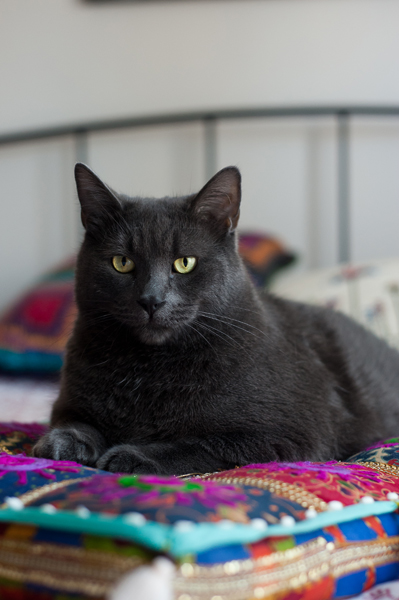Pet obesity is on the rise and universities are training veterinary students in animal nutrition and teaching them to engage pet owners in dialogue about animal health.
More pet owners are fattening up their furry friends with junk food, contributing to a “pet obesity epidemic,” according to the U.K.’s recently released 2012 Animal Wellbeing Report.
The report, conducted by the People’s Dispensary for Sick Animals (PDSA), revealed that 56 per cent of people in the U.K. who own obese cats believe their pet is a healthy weight.
Only three per cent of canine owners could identify what the ideal healthy weight of a dog should be.
At the Ontario Veterinary College at the University of Guelph, veterinary students and professionals have been running the “Furry and Fit” program to help obese pets develop a healthy diet plan and lose weight. The program has been running since October 2012.
Pets enrolled in the program receive physical examinations, nutritional consultations, and participate in hydrotherapy sessions, which involve exercising on an underwater treadmill, said Bonnie Wakefield, a veterinary technician at the school’s animal nutrition centre.
Pets that have completed the program successfully lowered their weight and body fat index, Wakefield said.
She said with obese pets becoming more common, veterinary students are trained in animal nutrition so they can make good recommendations to misinformed pet owners.
James Anthony, a second-year math student at Carleton University who owns a 26-pound cat named Moritz, said the pet food industry confuses owners about what is really nutritious.
“Almost everything is marked as healthy,” he said. Anthony said Moritz has become lethargic and oversleeps.
A proper diet is essential to the prevention of other health problems, such as arthritis, diabetes, cancer, respiratory disease, and shortened life expectancy, Wakefield said.
“We are teaching students to look at medicine from a preventive point of view and good nutrition is a big part of this,” Wakefield said.
In the U.S., where approximately 80 million dogs and cats are overweight or obese, according to the 2012 National Pet Obesity Survey, universities are focusing their resources on education and prevention.
This March, the University of California, Davis campus opened a revamped research building for their veterinary school, which includes a nutrition research centre.
Tufts University opened the nation’s first obesity clinic for animals, run by veterinary nutritionist Dr. Deborah Linder, in September 2012.
The Tufts clinic offers a weight loss program similar to the University of Guelph. It trains veterinary students to prevent obesity starting at a pet’s very first visit to a clinic.
Linder said while weight loss can be confusing for pet owners, she has seen happier, healthier pets emerge from her clinic’s program.
“Obesity is completely preventable and treatable,” she said. “There is more we can do and that starts with education and public awareness.”






